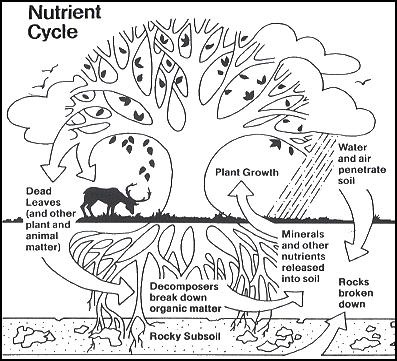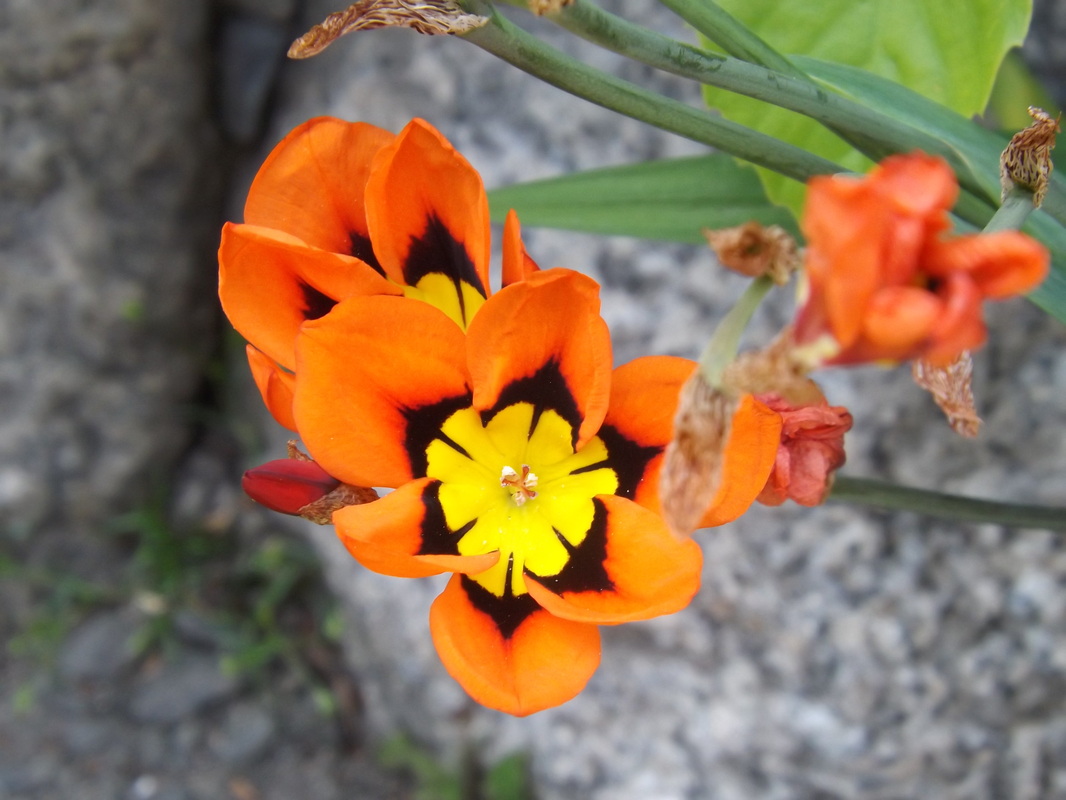As I approach the end of my exchange trip and reminisce about all the adventures I had and things I saw, I wonder: what was with all the flowers?
Just a few of the many flowers you're likely to see here. | | No matter the location or season here in Japan, you can bet you will always see flowers. During my stay, I've seen them everywhere from gardens, parks and temples, to clothes, artwork and advertising. They're even common decoration on food! So it pretty much goes without saying that flowers are very loved here in Japan. But why exactly is that? Well if I had to guess, I would say it's because of Japan's unique appreciation of nature. As I mentioned in my earlier post on Japanese conservation, people in Japan appreciate nature for mostly aesthetic reasons. If we were to compile a list of things in nature Japan loves, flowers would be somewhere at the top of that list. This is because flowers are not only beautiful to the country, but highly symbolic. They not only represent beauty, but impermanence. Happiness and sadness. Life and death. When flowers bloom, it is intense beauty,but this vibrance is short lived. Since the Heian period (794-1185) this has been observed through flower viewing (花見/hanami) and reflected on in poetry and artwork. People started to take this symbolism to heart and some-like the samurai- sought to live their lives in the same manner as a flower; short, but beautiful and intense. It may be because of this that Japan has grown so fond of flowering plants. A Floral Calendar  Apart from the aesthetic and philosophical appeal of flowers, they're also a great way to get a sense of seasonal changes in Japan. I've been told there's a flower to represent each month here. The only time the focus shifts away from flowers is during fall (particularly October and November) when the public marvels at the crimson display of maple leaves (better known as 紅葉/momiji here).
Japan guide has a good visual guide to the general blooming periods of Japan's most loved flowers here. If you'd like to see this floral calendar for yourself, there's no better way than to experience it yourself. Coming to understand Japan's love for flowers will not only help you better appreciate Japanese culture, but flowers as well. | Momiji; the honorary flower for the autumn months. |
So, if you read my previous two blogs on wildlife in Japan, you already know that while Japan is teeming with unique biodiversity, many species are at risk or endangered. But you're probably wondering, what does Japan think of all this?
Let's take a break from environmental issues for a bit and get back to the basics shall we?  Source~USDA NRCS & NSTA (2010) Based off of the title, I'm sure you all know that I'm going to talk about the importance of nutrient cycling in ecosystems. But what exactly is nutrient cycling? Well, all jargon aside, nutrient cycling is the flow of energy in -and out of- an ecosystem. It may seem hard to believe, but our world only has a finite amount of resources. Think of it like a decorative fountain you see in a park. Water continually flows through the fountain, but that doesn't mean that the water is infinite in supply; it's simply being reused. Earth is a lot like that fountain, only on a much larger scale and with everything. Literally everything you see -from your clothes, your dog, your phone, your lawn, your hair, even the computer screen you're staring at now to read this blog- needed energy to be made a/o needs energy to survive or function. In order to maintain balance and keep everything running smoothly, nature's got a pretty good thing going: its called eating.
After reading about all this crazy awesome biodiversity I just have one question: where is it? I have visited a few parks and other places to enjoy nature, but I haven't really seen any of these endemic species I wrote about earlier. So I decided to some digging to find out where all this teeming biodiversity is hiding.
Before I talk about biodiversity in Japan, I'd like to talk a bit about biodiversity in general. Basically, Biodiversity is the variety of all living things (plants, animals, fungi etc.) in a given area. Our world has an insane amount of diversity. Think about all the plants and animals you see on a daily basis outside your home. Maybe you'll see 20, 50, a couple hundred? The Earth contains millions of species; and that's just what we've been able to find.
All this biodiversity isn't just aesthetic. All living things are connected in a great web of resources and feedback systems. An ecosystem is thought to be in a healthy state if its biodiversity level is high. This is because ecosystems with a greater variety of species tend to be more resilient; the more strings that support the system, the less likely it is to collapse after a disturbance occurs.
Biodiversity varies a lot depending on where you are. Some places are naturally overflowing with an immense amount of species. These "hotspots" for diversity can be found in lots of places from Australia, to Madagascar to Japan. Since I'm currently living in Japan, I think it's appropriate that I tell you what I learned about Japan's biodiversity.

Yes-I DID take this picture xD
If you ever Google image search Japan, some of the first pictures you`ll see are traditional Japanese architecture surrounded by pristine landscapes untouched by time. When I would think about Japan and conservation, I almost immediately thought of energy saving products engineered by the country, as well as public attempts to improve our environment with things like the Kyoto protocol. I don't know about you, but these things gave me an impression that Japan really cares for it's environment. Often when things about Japan regarding this issue are brought up, it's always about how ahead of us (the U.S) they are in terms of energy alternatives and resource conservation. A New York Times article(you can read it here ) even stated that :Japan is the most energy-efficient developed country on earth.....it is much better prepared than the United States to prosper in an era of higher global energy prices.
Now , when I first got here I thought I'd see signs of the country's environmental awareness, and I did. But it wasn't exactly what I initially expected. In fact, a lot of it confused me; it was as if the country held a double standard on environmental conservation. - Why is it easier to recycle plastic bags and Styrofoam, but not paper?
- Places like apartment buildings and neighborhoods are generally kept spotless but you can find a fair amount of garbage littered throughout out the beach and woods.
- I've been told by several that cutting down trees is bad for the environment, but the Japanese government cuts down a massive amount of trees in Malaysia
So what gives??
Okay. So this post took a little longer than I initially expected for a few reasons.The main reason being that I didn't have internet here the first couple of weeks and I couldn't find any field guides for the area, so I couldn't properly research this topic. So my first few weeks out here, I tried my best to explore my neighborhood and comment on what I saw. To my surprise, what I mainly saw in the area besides cherry blossoms were plants that looked very much like plants native to the Pacific Northwest. As a result, species I found in my earlier observations were in the genus Thuja, Rhododendron, Prunus, Pinus, Lupinus, Tulipa etc.
|









 RSS Feed
RSS Feed